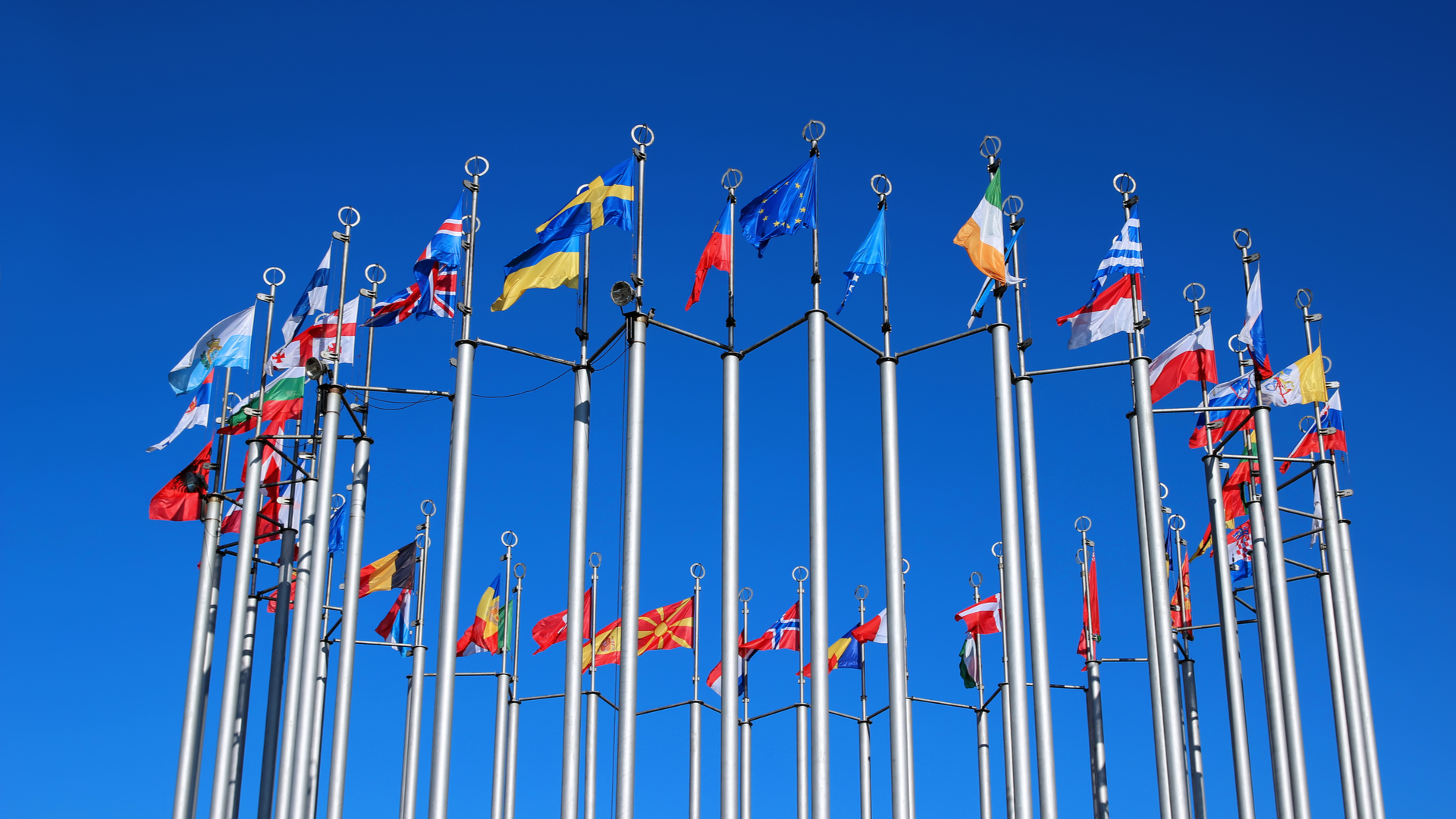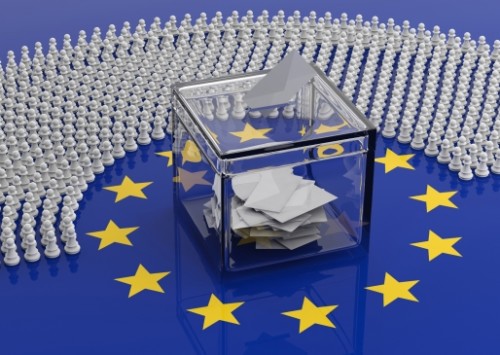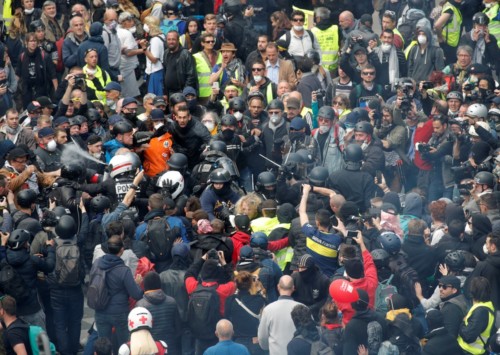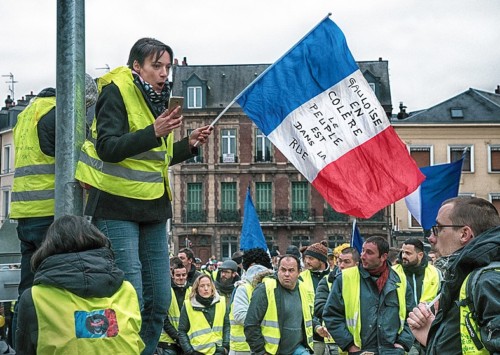Victory in Europe Day

The EU has indeed become a role model for many other parts of the world, inspiring the creation of regional blocs like ASEAN in South East Asia or SADC and ECOWAS in Africa.
In six decades after the end of the WWII, Europe made a surprising amount of progress. The last decade has seen some of those gains slip away.
As far turnarounds go, this one remains unparalleled in the world. On May 8, 1945, when the Nazis surrendered, formally ending the World War II, Europe was in ruins. Divided, distressed and in complete disarray. Its largest countries – the United Kingdom, France, Germany and Italy – were all on their knees at the end of a bloody war, which had not only left upto 78 million people dead across the globe, but had hit Europe particularly hard with its economy and unity in shambles.
But the picture changed rapidly. Thanks to some generous fiscal assistance from the United States, but more importantly due to proactive and progressive leadership in Europe, the sworn enemies of the past had come together and took an oath, never to let history repeat itself.
In less than a decade after the surrender, Europe was already laying the foundations of the future European Union, with the signing of the treaties in Paris in 1951 and Rome in 1957, which had brought the former enemies into a tight economic partnership, doing away with customs duties on trade within the community members.
Over the years, better integration of the community and expansion as new members, notably the United Kingdom joined, led to a spectacular, almost unmatched, rise in economic prosperity of Europe. The GDP per capita which stood at barely USD 876 in the 1960 is now over USD 38,500. The GDP per capita in the US was double that of Europe in 1960s and today many EU members have surpassed the US.
Besides liberalising trade within the community, the members also focused on building institutions and structures to ensure closer relations in all aspects – from common standards to joint research and development in key areas, including strategic ones, as exemplified by Airbus, a European military and civil aviation giant. To help the masses, the EU nations also adopted liberal social security systems that helped even the poorest within the region with proper access to the basic needs of a dignified life, including health. This system, over time, became a role model for many other nations around the world.
Meanwhile, the heft of the EU grew as it continued its expansion eastwards, most notably after the end of the cold war when it absorbed most of the former Soviet bloc nations like Poland, Czech Republic, Hungary and Romania. Today, with over 512 million people and a total GDP of USD 18 trillion, or almost 22 pc of the world, the EU is an important player, in every aspect. The EU nations have also been proactively involved in development and humanitarian aid across the world, with total overseas development assistance of USD 130 billion in 2017, representing about 57 pc of the total global assistance. With the arrival of a common currency in 1999 as well as a visa-free travel across most EU nations a few years earlier, the union was indeed complete.
EU at crossroads
The EU has indeed become a role model for many other parts of the world, inspiring the creation of regional blocs like ASEAN in South East Asia or SADC and ECOWAS in Africa. What the Europeans have achieved over the last seven decades is even more impressive when compared to the relations between former enemies in East Asia. Japan, South Korea and China remain mutually suspicious and even today the wounds of the WWII do not seem to have healed at all as the issue keeps cropping up frequently and leads to economic or political stand-offs between these countries.
However, now for over a decade, the EU has been at a crossroads. The 2008 financial crisis was the turning point as it hit the EU the hardest, also because the European Central Bank failed to react in time, unlike the Federal Reserve which had seen the tsunami coming and loosened money supply to allow the economy to absorb the unprecedented shock. The crisis saw the economies of many EU nations, like Italy, Spain, Ireland, Greece and Portugal crashing.
The crisis acted like a detonator and brought many issues to the surface. First, acerbic divisions within the EU members as fiscally disciplined, but much better off economies like Germany and the Nordic countries blamed the southern nations for their profligacy and spending beyond their means. Ties between Germany and Greece were specially hit as Greece was forced to adopt an extremely strict, perhaps too strict, austerity measures that led to a sharp rise in discontent in the country.
Discontent was not limited to these nations, but even spread to relatively better off economies like Germany, France and the UK. Most people turned hostile to the idea of taxpayers funding rescuing banks and other companies, whose executives paid themselves tens of millions of euros even as they led their ships to be wrecked. With the middle and poorer classes taking the brunt of the hit, issues like inequality and pro-rich governments began coming up. The flood of refugees from Africa and Middle East, fleeing terrible wars there, proved to be the final straw for many Europeans.
The discontent over inequality and the fear immigration have led to the rise of extreme right wing parties all across the EU and in several countries, they are either principal opposition or in government itself. It also was the primary reason behind the support for Brexit and the EU has become a favourite target in this condition. Today, the EU nations also stand bitterly divided, unable to agree on a common course and in many nations, as in France, the leadership stands undermined.
Surely, the EU can recover from this crisis. But it would need the same kind of visionary and stellar leadership that its politicians had shown in 1950s. Can today’s leaders measure up to them ?












